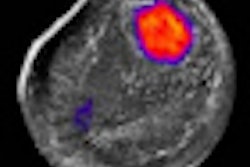Tuesday, November 30 | 3:00 p.m.-3:10 p.m. | SSJ02-01 | Room E450A
Malignancy rates for multiple-bilateral breast masses detected at whole-breast ultrasound are comparable to rates for masses with similar features but not categorized as multiple-bilateral, according to researchers from Johns Hopkins at Green Spring Station in Lutherville, MD.In this Tuesday afternoon session, Wendie Berg, MD, PhD, and colleagues plan to share findings from their study, conducted under the auspices of the American College of Radiology Imaging Network (ACRIN) 6666 trial. Berg's team compared malignancy rates for multiple-bilateral masses (i.e., similar, apparently benign findings in both breasts, and at least two in one breast and one in the other) to single masses with the same features.
The study began with 2,662 women who underwent screening mammography and whole breast ultrasound; of these, 1,630 women had ultrasound findings. Of these women with ultrasound findings, the team identified 144 with 152 unique multiple-bilateral masses. No malignancies were found among this multiple-bilateral mass group. Berg's team found 1,837 nonmultiple-bilateral masses in the 1,114 participants who had ultrasound findings. The malignancy rate in this group was less than 2%.
Also of interest, Berg found that women with a personal history of breast cancer were less likely to have multiple-bilateral masses than those who did not (3.6% versus 17.3%, respectively).
The study suggests that a BI-RADS 2 benign categorization of these kinds of multiple-bilateral cysts is appropriate, the team concluded.




















